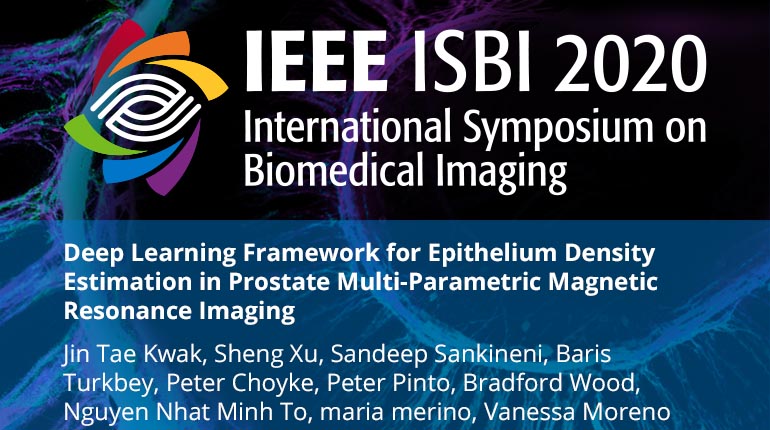
Already purchased this program?
Login to View
This video program is a part of the Premium package:
Deep Learning Framework for Epithelium Density Estimation in Prostate Multi-Parametric Magnetic Resonance Imaging
- IEEE MemberUS $11.00
- Society MemberUS $0.00
- IEEE Student MemberUS $11.00
- Non-IEEE MemberUS $15.00
Deep Learning Framework for Epithelium Density Estimation in Prostate Multi-Parametric Magnetic Resonance Imaging
Multi-parametric magnetic resonance imaging (mpMRI) permits non-invasive visualization and localization of clinically important cancers in the prostate. However, it cannot fully describe tumor heterogeneity and microstructures that are crucial for cancer management and treatment. Herein, we develop a deep learning framework that could predict epithelium density of the prostate in mpMRI. A deep convolutional neural network is built to estimate epithelium density per voxel-basis. Equipped with an advanced design of the neural network and loss function, the proposed method obtained a SSIM of 0.744 and a MAE of 6.448% in a cross-validation. It also outperformed the competing network. The results are promising as a potential tool to analyze tissue characteristics of the prostate in mpMRI.
Multi-parametric magnetic resonance imaging (mpMRI) permits non-invasive visualization and localization of clinically important cancers in the prostate. However, it cannot fully describe tumor heterogeneity and microstructures that are crucial for cancer management and treatment. Herein, we develop a deep learning framework that could predict epithelium density of the prostate in mpMRI. A deep convolutional neural network is built to estimate epithelium density per voxel-basis. Equipped with an advanced design of the neural network and loss function, the proposed method obtained a SSIM of 0.744 and a MAE of 6.448% in a cross-validation. It also outperformed the competing network. The results are promising as a potential tool to analyze tissue characteristics of the prostate in mpMRI.
 Cart
Cart Create Account
Create Account Sign In
Sign In





